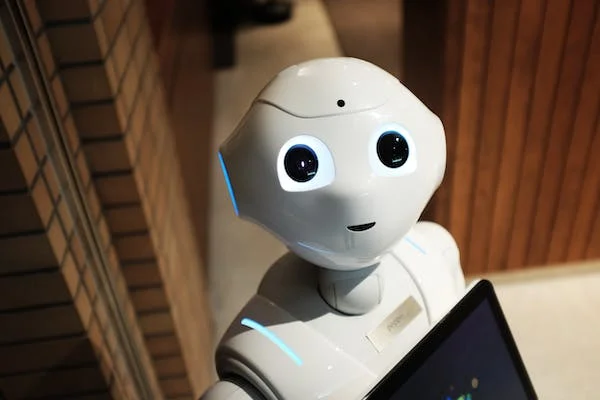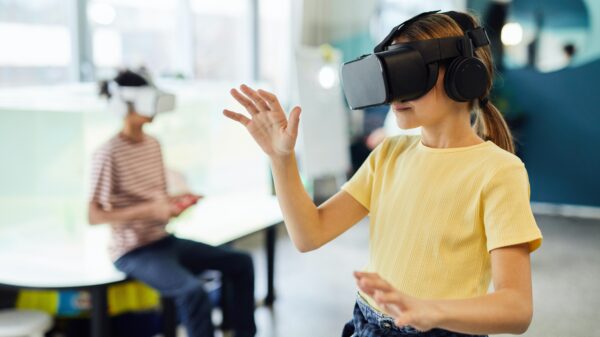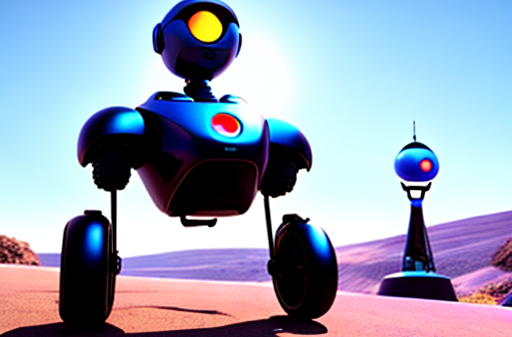Step into the future with us as we explore the intriguing world of robotics! What was once thought to be a mere figment of science fiction, has now become a reality and from self-driving cars to robotic pets, these advanced machines are changing the way we live and work. Join us on this journey as we delve deeper into this fascinating realm and discover what lies ahead for the field of robotics so get ready to have your mind blown by some truly amazing technology!
Introduction to Robotics
Robotics is a fascinating and rapidly growing field that combines engineering, computer science, and artificial intelligence to create machines that can think and act for themselves.
Robots are increasingly being used in a variety of settings, from manufacturing plants to hospitals to homes because they offer many potential benefits, including increased efficiency and productivity, improved safety, and enhanced quality of life.
However, as with any new technology, there are also some risks associated with robotics. These include the potential for job loss as robots increasingly perform tasks that humans currently do, as well as the possibility of robots becoming uncontrollable or even malicious if not properly designed and managed.
Thus, it is important to understand both the opportunities and challenges posed by robotics. This blog article will provide an introduction to robotics, exploring its history, current state of development, and future prospects.
History of Robotics
Robots have been a staple of science fiction for decades, appearing in everything from movies to books to TV shows. In recent years, however, they’ve become increasingly commonplace in the real world as well. From industrial assembly lines to home assistants, it’s clear that robotics are here to stay.
So where did this technology come from? It turns out that the history of robotics is just as fascinating as the future of robotics. Here’s a brief overview:
The word “robot” was first used in a play by Czech writer Karel Capek called R.U.R., which stands for Rossum’s Universal Robots. The play was written in 1920 and introduced the idea of robots as slaves who eventually rebel against their human masters.
The term “robotics” was coined by Isaac Asimov, a science fiction author who wrote several stories about robots. In his 1941 short story “Runaround”, he proposed three laws of robotics which are still cited by scholars today.
One of the first real-life robots was created by American engineer George Devol in 1954. His Unimate robot arm was installed on an assembly line at General Motors, where it helped build car parts.
Today, there are all sorts of different types of robots being developed for all sorts of different purposes. Industrial robots like those used by GM are still common, but there are also medical robots, military robots, and even domestic robots like the Roomba vacuum cleaner
Types of Robots
When most people think of robots, they likely picture something like the humanoid machines seen in movies like The Terminator or Ex Machina. But in reality, there is a wide variety of robot types that are designed for specific purposes. Here are some of the most common types of robots:
Industrial Robots: These are perhaps the most familiar type of robot, as they are commonly used in factories and other industrial settings. Industrial robots are typically large and powerful, and are used to perform tasks such as welding, fabricating, and assembling.
Service Robots: Service robots are designed to assist humans in a variety of ways, such as providing assistance to the elderly or disabled, vacuum cleaning homes, or even delivering packages.
Educational Robots: Educational robots are becoming increasingly popular in classrooms as a way to engage students in STEM learning. These robots can be programmed to perform various tasks or even compete against each other in challenges.
Medical Robots: Medical robots are used in a variety of healthcare applications, from performing surgery to assisting with physical therapy. These highly precise machines help doctors and nurses provide better care for patients.
Military Robots: Military robots have been developed for a variety of purposes, including bomb disposal, reconnaissance, and even combat. While these machines are often controversial, they can help keep soldiers safe by performing dangerous tasks in their stead.
Advantages and Disadvantages of Robotics
Robots are increasingly becoming a staple in many industries, with their use cases ranging from manufacturing and logistics to healthcare and agriculture. While robots offer a number of advantages over human workers, such as increased efficiency and productivity, they also come with some disadvantages that should be considered before implementing them in your business.
Advantages:
1. Robots can work faster than humans, meaning more tasks can be completed in a shorter timeframe.
2. They can work for longer hours without tiring, increasing overall output.
3. They are more accurate than humans, leading to fewer mistakes and reworks.
4. They are not affected by emotions like humans, meaning they can make unbiased decisions.
5. In some cases, they can be less expensive than human workers over the long term.
Disadvantages:
1. They require a significant upfront investment, which may not be feasible for all businesses.
2. They need to be regularly maintained and updated, which can add to costs over time.
3. They can cause job losses as they replace human workers in many roles.
4. Some people may view them as cold or impersonal, which could lead to resistance from employees or customers
Application Areas of Robotics
Robotics technologies have been developed for a wide range of applications. These include:
Industrial and commercial applications: Robotics technologies are used extensively in manufacturing and assembly operations. They are also used in logistics, packaging, and materials handling.
Medical applications: Robotics technologies are used in surgery, rehabilitation, and diagnostic procedures. They can be used to assist surgeons, provide physical therapy, and perform diagnostic tests.
Military applications: Robotics technologies are used in a variety of military roles including reconnaissance, surveillance, target acquisition, and bomb disposal.
Space applications: Robotics technologies are used in space exploration missions to collect data and samples from other planets and moons. They are also used to maintain and repair spacecraft.
Consumer applications: Robotics technologies are used in a number of consumer products such as vacuum cleaners, lawn mowers, and pool cleaners.
Ethical Considerations in Robotics
As robots increasingly enter our everyday lives, it is important to consider the ethical implications of their presence. Some of the key ethical considerations in robotics include:
-The impact of robots on employment. As robots are capable of performing many tasks that humans currently do, there is a concern that they will lead to large-scale job losses.
-The safety of people interacting with robots. As robots become more sophisticated, there is a risk that they could cause harm to humans if they malfunction or are used maliciously.
-The privacy implications of having robots in our homes and workplaces. Robots may be equipped with sensors and cameras that could collect data about our daily activities and routines. This data could be used for commercial or other purposes without our knowledge or consent.
-The potential for robots to be used for unethical or illegal purposes. For example, there is a concern that autonomous weapons systems could be used to kill people without due process. Additionally, criminals may use robots for activities such as burglary or smuggling drugs.
Future Directions for Robotics
The future of robotics is expected to bring more advances in artificial intelligence and machine learning, as well as more humanoid robots. In addition, the use of robots in healthcare is expected to increase, as they are able to help with tasks such as lifting patients and providing aid with physical therapy. There is also potential for robots to be used in hazardous environments, such as in space or during search and rescue missions. As the technology continues to develop, the possibilities for what robots can do are endless.
Conclusion
Robotics are becoming increasingly relevant in modern life as technology continues to evolve. From robots in factories to autonomous vehicles, robotics have the potential to revolutionize how we work and live. It’s an exciting time for roboticists who are pushing the boundaries of what is possible with this emerging technology. As more advances are made, it will be interesting to see where robotics takes us next and just how far science fiction becomes reality.










